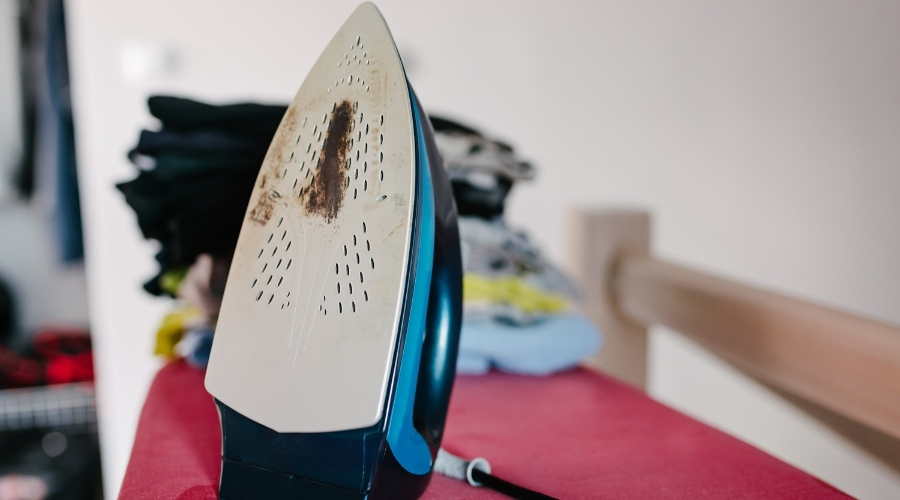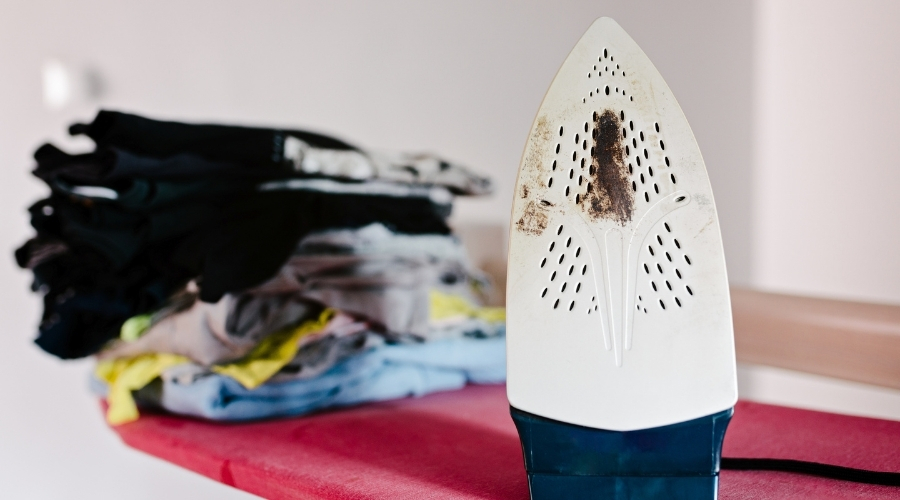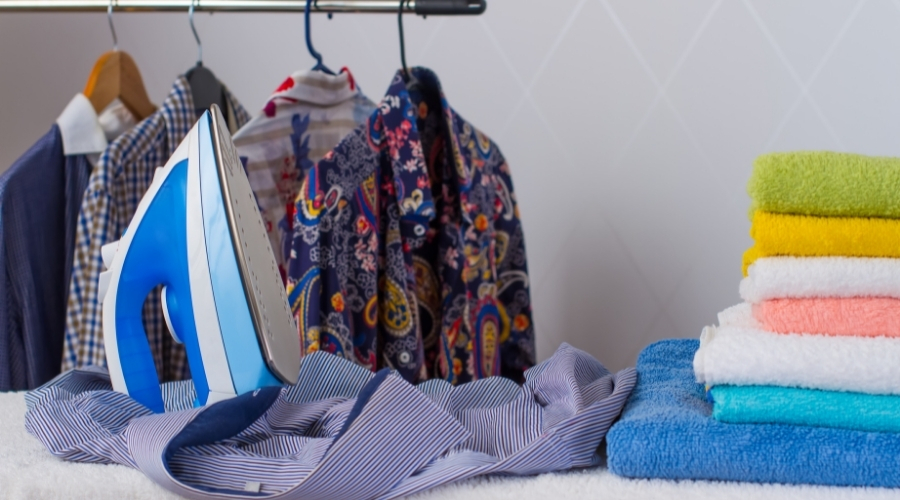Suppose the base of your iron looks dull and worn out, and instead of steam coming its mineral deposits. Then, with the right resources, you can restore the bottom of your iron to good as new. A clean iron lasts longer, and your clothes look more presentable.
How can I clean my iron at home? Step by Step guide

When your iron bumps across your clothes instead of gliding on them smoothly, instead of straight lines, your creases look more like a warzone, then it’s time for you to know how to clean an iron plate. If you don’t want your fingers getting burnt, then make sure the iron is cool, unplugged, and sitting on a towel. Here are two extensively used ways to clean iron at home easily.
Vinegar is a cleaning solution that you can apply on the base and inside of your iron. A natural cleaner, deodorizer, and disinfectant, white vinegar is a housekeeping necessity. Following are the steps to clean an iron using vinegar.
- Dip a clean cloth in vinegar and place your iron on it facing down.
- Wipe away the grime and vinegar with a damp cloth after 30 mins.
- Mix salt and water in a saucepan, heat it until the salt disappears for tougher buildup removal from your iron soleplate.
- Scrub the base of your iron with a microfiber cloth whilst using dishwashing gloves to remove any additional residue.
Like Vinegar, Newspaper, and salt can also be used to clean your iron.
Following are the steps to clean an iron with the help of some salt and a newspaper.
- Place a piece of newspaper on an ironing board and set your iron to a warm setting.
- Apply a little salt on the newspaper and iron in circles till the salt is mostly gone.
- Remove the plug from your iron, set it aside to cool, and wipe the salt and dislodged dirt and filth away with a moist cloth.
How do I get the brown or black stuff off my iron?
To remove darkened black or brown patches on the base of your iron. make a mixture of 3 parts baking soda, and one parts water into a paste. Apply this on the brown or black patches of your iron and leave it for some time. Remember that the paste should only be applied to the hot surface of the iron, not the steam holes. Scrub it clean after that. The majority of the patches will be removed.

What is the black stuff on my iron?
The darkened patches of black or brown appear on the base side of your iron when dirt, dust, spray starch, and fabric fibres buildup on the bottom soleplate of your iron and old water inside your iron’s water reservoir can start causing rust spots. The darkened patches of black rust can also come from melted synthetic fabrics or spray starch buildup. As the iron cools, the residue becomes practically difficult to eradicate, but if you preheat the iron beforehand and proceed safely to prevent burns, you can clean it off.
Why is my iron spitting out brown stuff?
Organic particles or iron deposits in the hard water used to fill the iron create the brown liquid that streams out of the steam vents. The presence of calcium in the water could explain any signs of white material discharges. Because of an increase in the residue due to hard water, the temperature of the iron or dissolved salts forms on the soleplate, a brown or sometimes white liquid may emerge from the iron.
How to get the most out of your iron?
- By using distilled water, you can increase the lifespan of steam irons because distilled water does not contain any heavy metals. Distilled water can also be made by boiling water and collecting its steam. Rainwater is also devoid of heavy metals hence, being a suitable replacement for distilled water if there isn’t any available.
- Disconnecting the iron and draining its reservoir aids in the removal of the iron’s residual heat. After that, set aside the iron to cool before keeping it upright in a cool, dry area.
- Rinse the iron on a regular basis. Do it just when the iron is turned off and cool. The reservoir can be rinsed out and cleaned by using hot water. With a clean moist cloth, wipe the entire iron, with the cord included. Dry the iron using a different cloth before storing it in a cool and dry place.
- Avoid allowing hard water to accumulate in the reservoir. Pour white vinegar into the iron’s water container to clean it out. Turn on the iron and set it aside for a few minutes. Turn it off and unplug it, then let out the white vinegar from the reservoir. Dry up the chamber and let it cool down before you refill it.
- Wipe away the dirt or residual starch from the baseplate of your steam or dry iron. It can restrict its performance and decrease its lifespan. So, use a cloth moistened with white vinegar and clean the baseplate of your iron. Sometimes steam irons have difficulty letting out steam, usually because the steam ports are clogged. That can be cleaned by taking a thin wire and sticking the wire in the holes to clean the ports.
- Use an iron mat, every fabric requires specific care. With an iron mat, you will remove stubborn wrinkles easily and simply without damaging your clothes, burning your fingers or other things around you.
Related: How to get wrinkles out of a shirt?
To successfully remove wrinkles out of a shirt, you need to follow certain principles.
Moisture is essential. Either uses an iron with steam or spray the shirt with water, roll it into a bundle and let it sit to ensure the moisture is soaked inside the fabric and evenly distributed.
- Start from the minor areas such as the cuff and the collar and then slowly go to the larger areas such as the front and back.
- Use long, smooth movements with a firm hand, and don’t run the iron back and forth aggressively. Put pressure on the back of the iron rather than the front to avoid making creases.

Conclusion
Now, after you’ve learned how to clean an iron, it’s time to put it to use. and get rid of annoying black stains, how to increase the iron’s life, and how to remove wrinkles from shirts. Your ironing skills have evolved to a whole new level. Keep in mind to use the necessary resources and how to apply them as mentioned above, and you’re good to go. The better the condition of the iron and the ironing itself, the better the clothes look.
